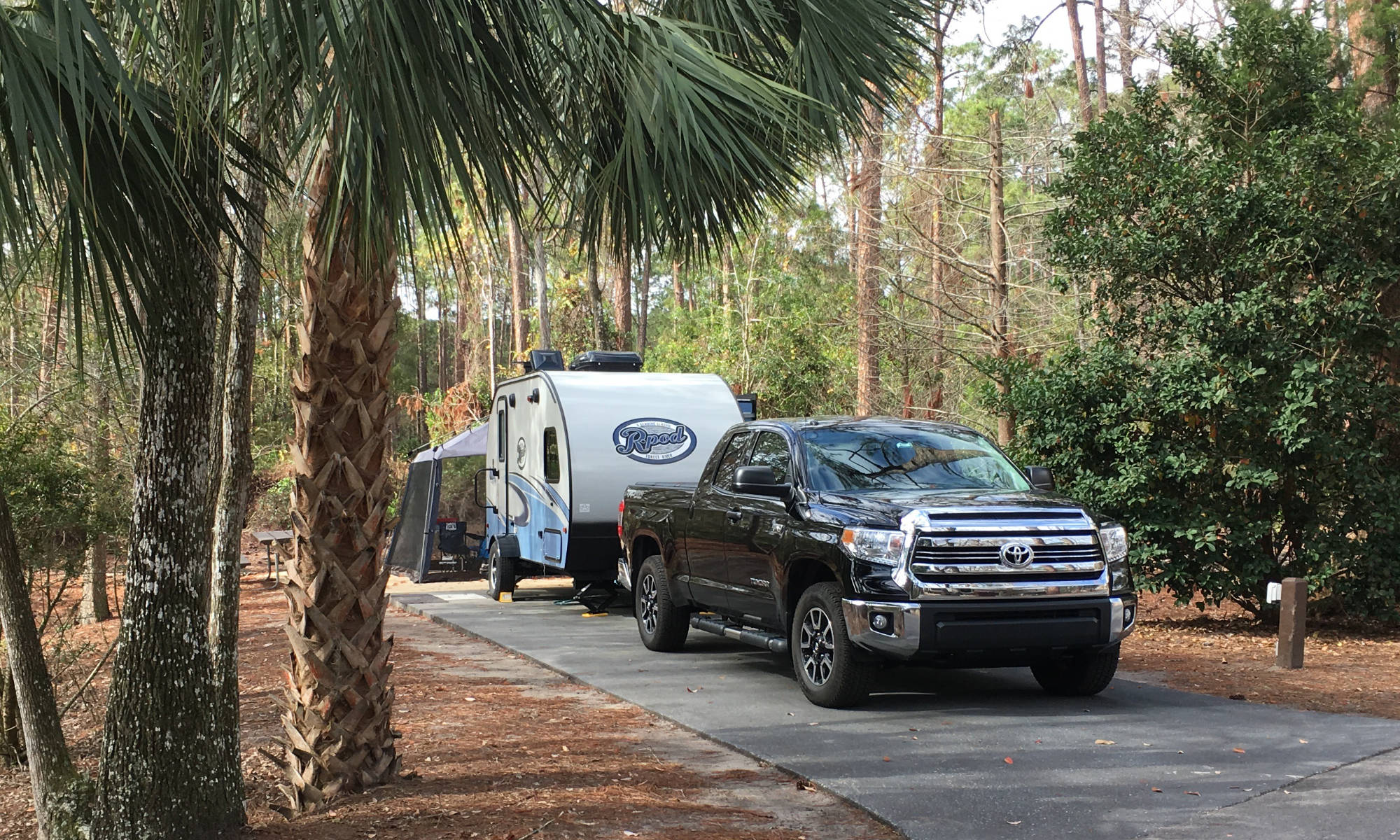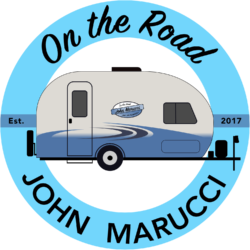In this blog, we’ll be going over the latest RV news and travel trends, including my take on the latest criticism of snowbirds who winter in Florida. It’s time for data-driven travel news, so let’s get to it.
First up, is air travel turning the corner? It seems that air travel may finally be starting to recover as the impact of the Omicron variant fades. Passenger volumes have hit the 90 percent rate vs. two years ago for the past week. It could be that we are seeing a full recovery at this point. As a reminder, we cover TSA air passenger volumes because air travel is an indicator of a general travel recovery that may also impact the continuing move toward RV travel. If the demand for RVs slows as people decide to vacation traditionally, pricing for both new and used RVs should moderate.
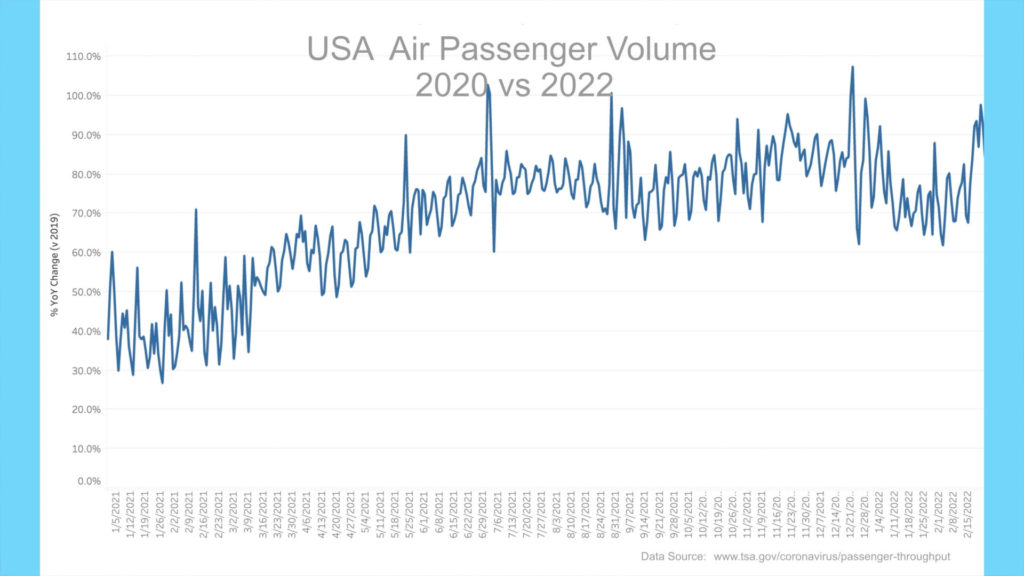
Next up, one supply indicator for new and used RVs is for-sale numbers on RVtrader.com. The number of new and used RVs for sale continues to grow, maintaining greater than 200,000 units for sale over the past eight weeks. This reinforces the idea that supply is growing to meet demand and that eventually, pricing will stabilize. Of note is the volume of used RVs, which has flattened over the past several weeks at just under 50,000. While prices remain much higher for used RVs than a year ago, pricing may be moderating as we move to the spring camping season.
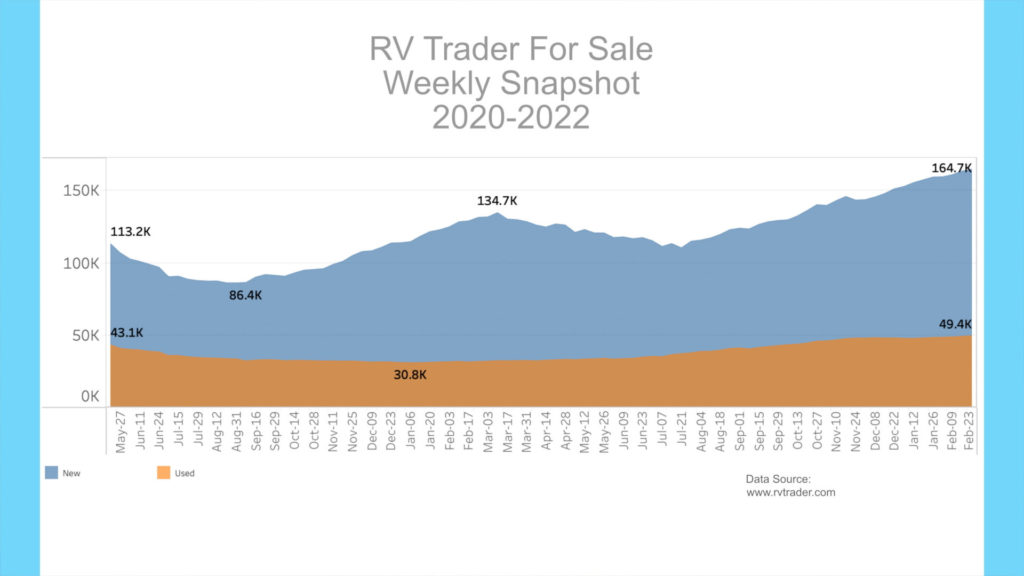
My take is that we will likely see dealer lots fill up this spring on lower to mid-priced RVs with some moderate form of discounting returning to the market. It may not be the 25-30% discounts of the late twenty-teens, but we should see some form of real discounting on moderately priced RVs. As our Colonial Airstream Indicator shows, the higher-end RV market still has vast backorders. As a reminder, Colonial Airstream is one of the nation’s largest Airstream dealers. Looking at this graph, it is apparent that Colonial hasn’t seen much change in inventory over the past several months, with a high percentage of RVs on order and very few (3) on the lot for sale.
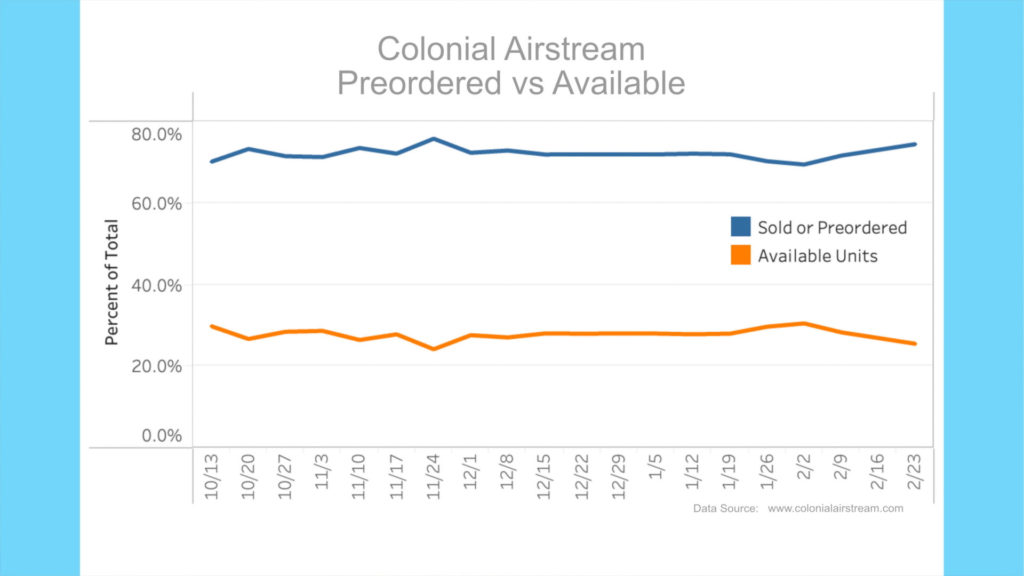
Are National Parks Doing Well? Several National Parks and NPS properties saw record visitors in 2021. Interestingly, while some big-name parks witnessed records, many saw a decline vs. prior years. Limitations on visitors via park entry reservation requirements, reduced capacity, and natural disasters hurt the attendance at several parks. We have data from all the Park Service properties, including National Parks, and the real story is that only a few of the larger National Parks had record volumes in 2021.
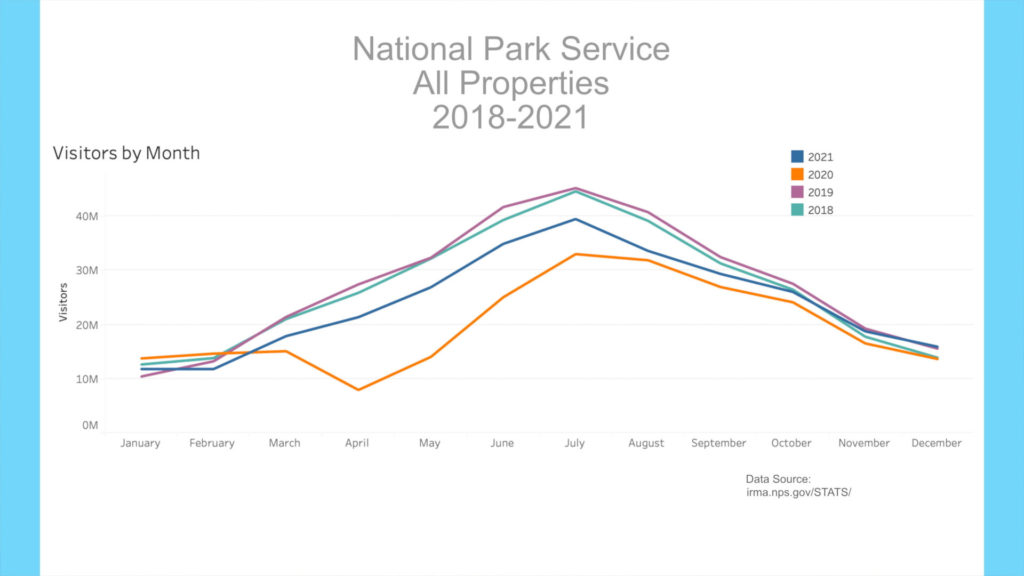
Looking at all National Park Service properties, 2021 surpassed 2020 visitor volumes but was significantly lower than 2018 and 2019. A majority of the total volume comes from non-National Park sites, many of which had significant restrictions on entry during 2021.
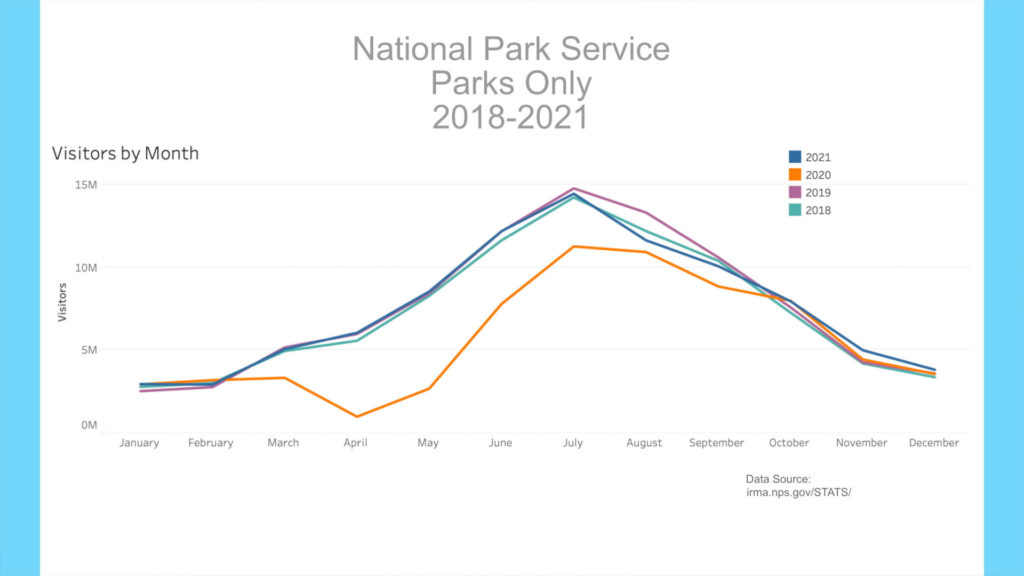
Looking at National Parks, it is apparent that 2021 was a solid year overall, even compared to 2018 and 2019. Most National Parks were fully open during the year with some limitations to attendance. Some parks, like Sequoia National Park in California, had a severe fire in September and October that shut much of the park down. You can see by the chart that attendance suffered immediately and lasted through the remainder of the year.
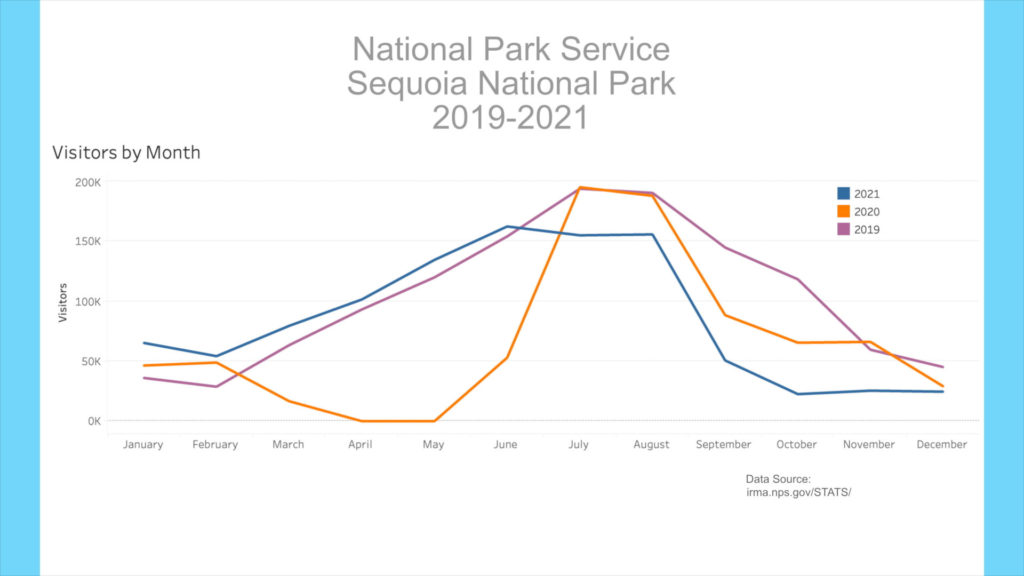
National Monuments, Historic Sites, and National Battlefields were significantly down for the year vs. prior years. Like White House tours, some attendance drops are due to closures and attendance restrictions, and some places outpaced all previous recent years, like Wright Brothers National Memorial. Generally, indoor locations suffered due to pandemic restrictions, as expected.
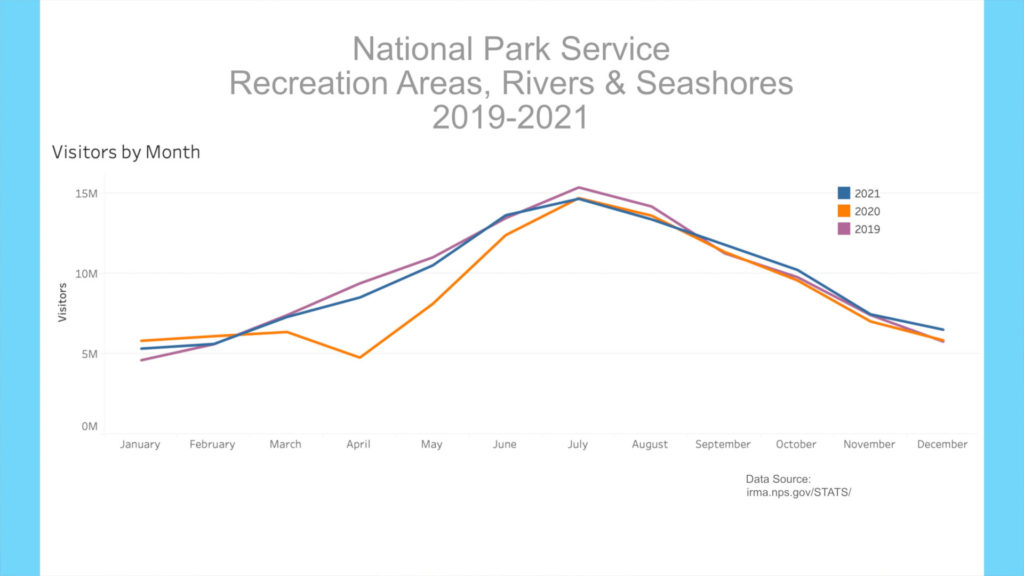
Looking at outdoor National Recreation areas, Rivers, and Seashores, annual visitor volumes were equally strong as in past years. This makes sense as these outdoor areas were likely open without restriction for most or all of 2021. The desire to be outdoors did not slow during 2021, and many NPS properties benefitted from this. Overall, the NPS had an excellent year in terms of visitation, given some profound and lasting attendance restrictions. The big question is, will inflation, especially the price of gas, curtail visitation numbers in 2022.
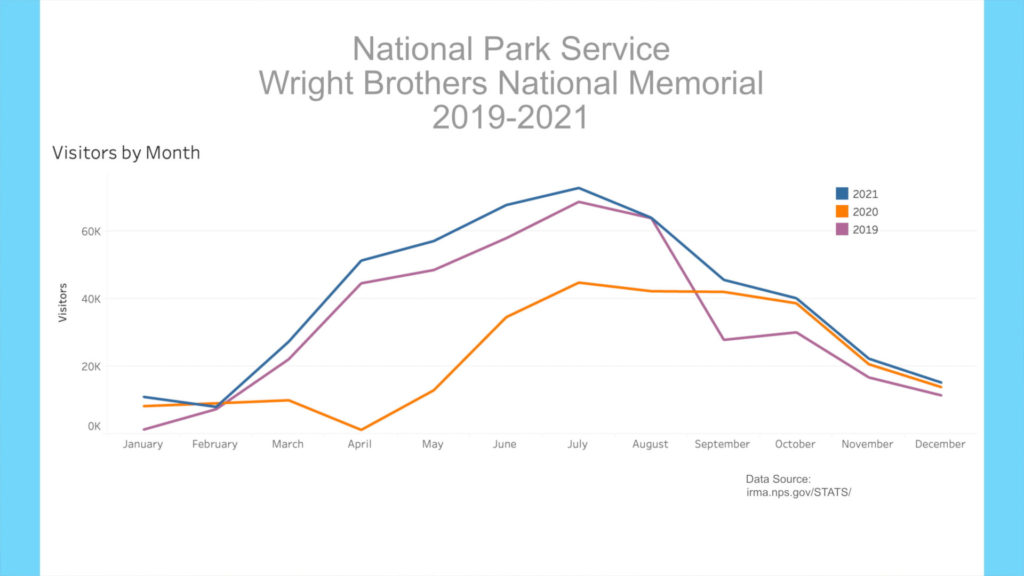
Next up, should Floridians hate snowbirds? A few comments have been on a recent article from Nanci Dixon of RVtravel.com where Floridians are bemoaning snowbirds who are taking their sites at Florida State Parks and other camping locations.[1] Some Floridians think it unfair that people outside of Florida can book campsites as early and at the same price as residents and even feel out-of-state campers should be taxed more than Florida residents.
One person comments, “Snowbirds are a problem for the local Florida residents who would like to go and enjoy the state and county parks that we pay taxes on. The Snowbirds come down and book up the campground then don’t show up. We have run into this several times. We get an unscheduled family weekend and would like to go camping and the parks are full of empty spots in the park. The Florida residents should have priority and be able to book places over non-residents. There should be a Snowbird tax. They are welcome to visit. If they stay for a certain length of time, pay taxes to keep up the roadways and parks that they are using. The parks are full, roadways overcrowded, and there is more congestion at the hospitals and other areas.”
There are a few things to point out in the discussion. First, if you do live in Florida, you don’t have a state income tax, so much of the tax base for government services comes from three sources: sales taxes, property taxes, and government fees. Property taxes usually fund schools and local government services. Gas Taxes generally fund roads. This leaves other sales taxes and government fees as a general funding source.
So, let’s look at a booking I made last season at a Florida State Park. You can see the reservation fee, the daily rate, and the utility fee. The utility fee is a $7 per day tax on RVs, as tent campers don’t pay this fee. The utility fee was included in July 2021, likely to cover increased electricity use from RVs in the summer. In winter, A/Cs are used sparingly, and most RVs are heated with propane paid for by the RV owner. I call it a tax by another name.
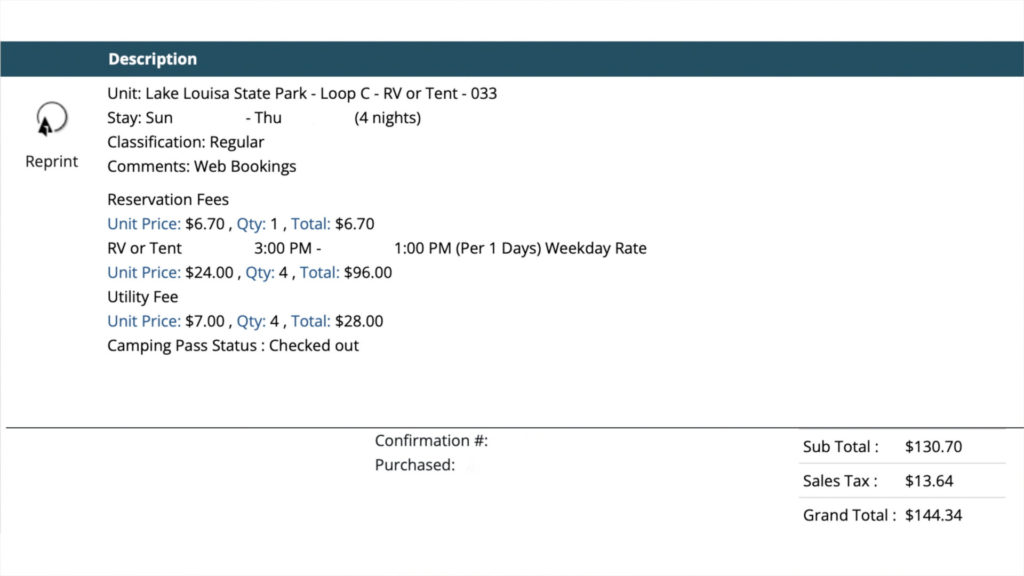
So, for a four-day stay, the reservation fee is $6.70, the site rental is $24 per night or $96 for the stay, and the utility fee is $28. Sales tax is $13.64. The total cost for the four days was $144.34 or $36.08 per day. So, fees and taxes add 50% to the $24 per day price of the site rental. This $12.08 per day in fees and taxes goes to help fund the state and state parks.
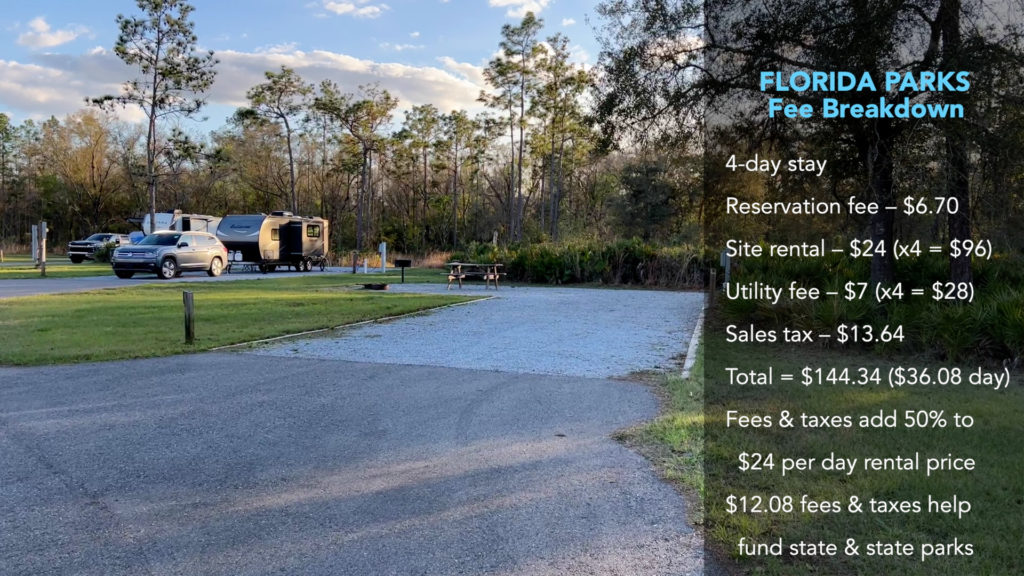
If I extrapolate out taxes and fees over a 90-day trip, it equals just short of $1,100. Take this amount and multiply it by a likely low estimate of 10,000 people snowbirding, and you come out with just under $11 million incremental benefit to Florida’s coffers. No small amount.
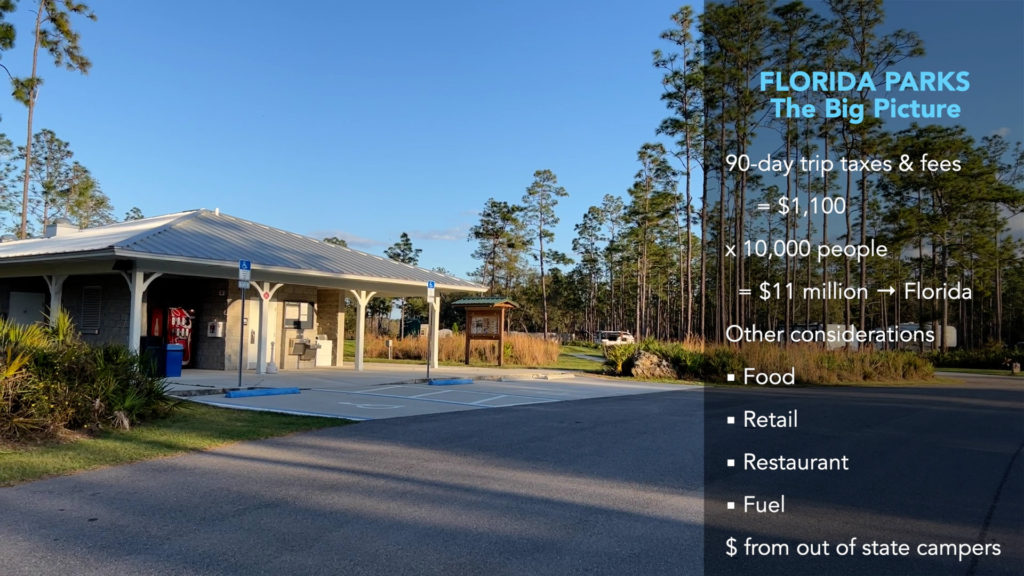
What we haven’t talked about are all the food, retail, restaurant, and fuel purchases made by out of state campers while in Florida. There is obviously a huge benefit to tourists covering a significant portion of state revenue – much more than just what comes from park fees.
Also, next time you are staying at a Florida State Park in the winter, walk around and look at the license plates in the campground. You may be surprised that residents take up many slots. If you want to get a great campsite in winter at a state park, anyone in or outside of Florida who understands knows you have to book 11-months ahead of time when the booking window opens. The few full-hookup sites at Lake Louisa or Wekiwa Springs or Silver Springs, for example, go pretty much immediately.
Finally, have you ever noticed that many Florida State Parks have sites that go empty for your entire stay at a campground? This became frustrating as I heard about people having a hard time getting site reservations. If you go online and try to book at Colt Creek State Park, for example, you’ll notice several missing site numbers. Sites 8, 10, 28, and 33 are not reservable. Site 10 is the campground host, but the other three are unused sites held for emergencies. Site 8 is directly across from the bathhouse and laundry machines, certainly a coveted site. Colt Creek is one of my favorite places, and I’ve commented to the park a few times about this since these sites are prime winter real estate.
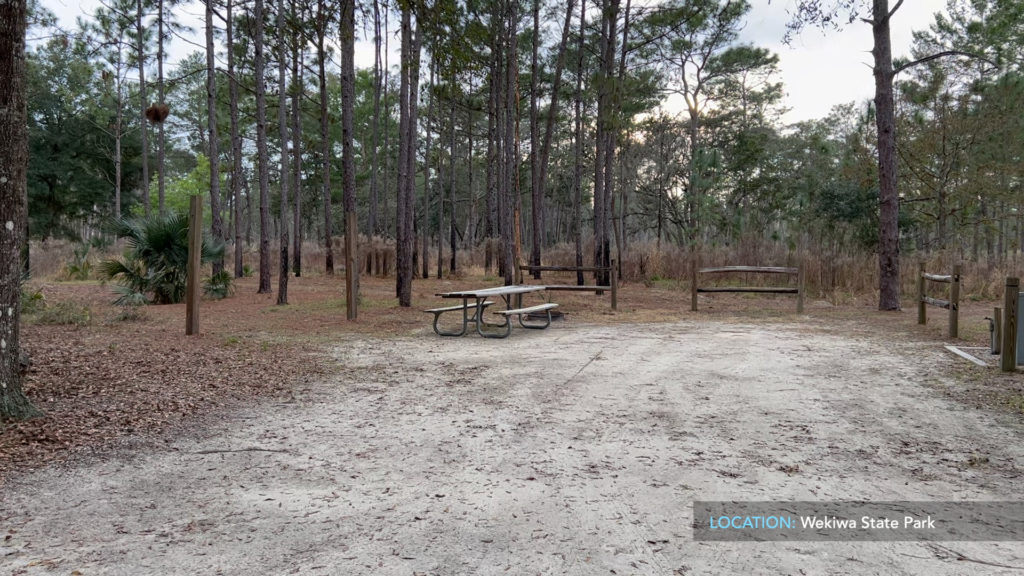
I’m not sure those running the parks understand the daily and ongoing loss of revenue that could be funding park improvements. So, let’s analyze the lost revenue from Site 8 at Colt Creek. As mentioned above, during a prior stay at Colt Creek, I paid $24 a day plus taxes and booking fee and the $7 daily utility fee. So, the actual daily revenue for this site was $36.08. Every day the site sits empty when it could be full, the park and state lose a combined $36.08. Multiply that out by an 85% occupancy loss rate, or 310 nights per year, and you have a loss of $11,178.60 for this one site. Multiply this by the three unoccupied sites, and the park is losing $33,535.80 per year – enough to do quite a bit of upkeep, maintenance, salary improvement, etc.
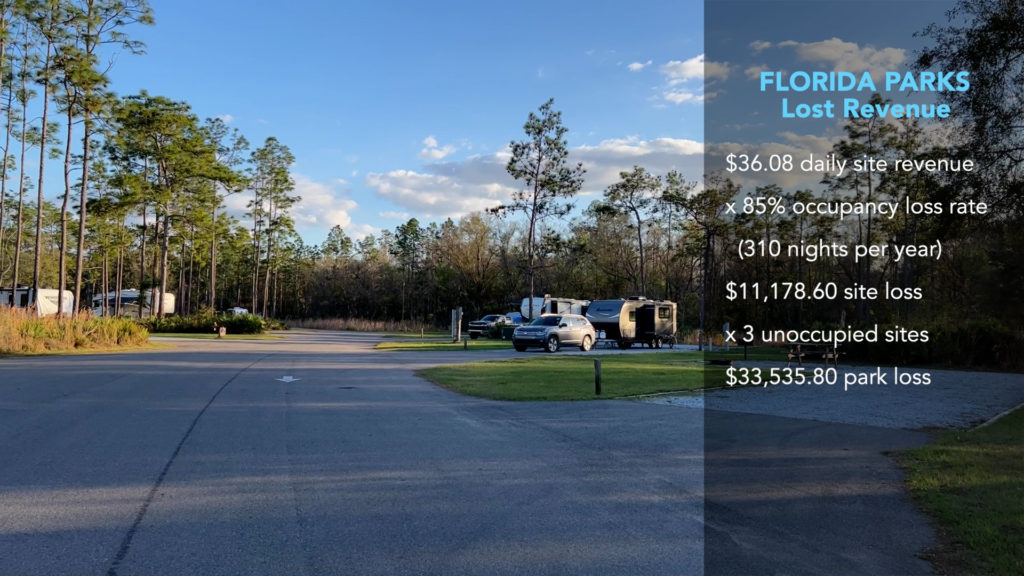
I think the very first thing any Floridian should do who loves camping at these great state parks is to ask why these sites sit unused. Every time a follow-up survey is emailed to you after a trip, ask this question. Maybe someone will take note and change the policy and open more sites that sit empty to reservations.
Finally, for today’s news, fuel prices are staying stubbornly high. AAA’s latest figures show that as of February 23rd, 2022, the current national average price per gallon of regular unleaded is $3.535[2], up 20.6¢ from a month ago and up from $2.645 a year ago. Given a long trip of 3,000 miles with your tow vehicle getting 10 mpg, it would cost you $1060.50 now vs. only $793.50 a year ago — over a 33% increase.
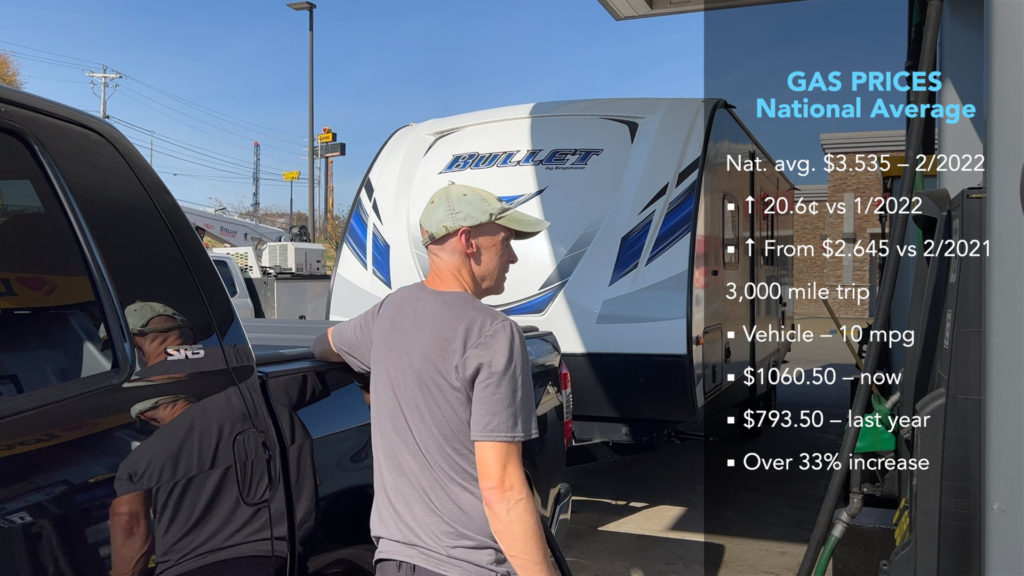
Okay, that’ll do it for today’s news blog. If you are new to RVing, please join our New to RVing group at johnmarucci.com and receive our free Getting Started videos in a convenient email.
All the best in your camping endeavors!
We have specific groups for those New to RVing, those interested in our Latest Happenings, and those who want to be reminded of our Podcast episodes. Just click here to sign up for any of these lists.
We’d love for you to join the On The Road Team by subscribing to the YouTube channel. You can also follow John on Facebook @JohnMarucciOnTheRoad.
As always, thanks to our fans who support our efforts by starting their shopping from our Amazon Storefront and by their generous financial support by using the THANKS feature located under each YouTube video ($ within the Heart icon). Your support is greatly appreciated!
